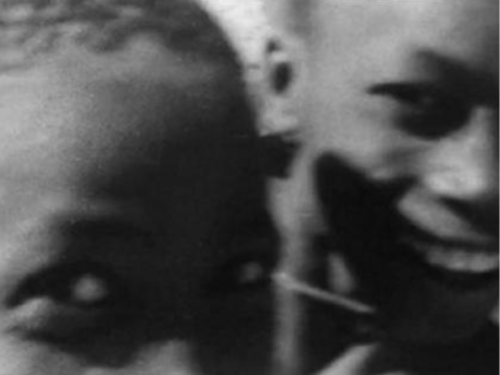
« La caméra n'a servi ici que de crayon pour enregistrer ce que la main ne peut noter.
L'observateur s'est contenté de filmer les scènes de la vie de tous les jours d'un village de magiciens noirs, sans en provoquer une seule, et sans même tenter le moindre truquage. »
Carton de titre Les Magiciens de Wanzerbé
“In his doctoral thesis (La Religion et la Magie Songhaï), Rouch comments that of all the ceremonies that he had been able to see in Africa up until that point, including all the possession ceremonies, this ceremony in Wanzerbé, on account of its gravity and its dramatic effect on the audience, was “without doubt the most beautiful and most moving.” From an ethnographic point of view, cultural anthropologist Paul Stoller regards this film as one of Rouch’s most important, particularly the sequence of the vomiting up of the sorcerer’s chain, a seemingly miraculous act that neither he nor Rouch has been able to explain. (...) There are many moments in Les Magiciens de Wanzerbé, such as the remarkable close-up of a severed vulture’s head in profile that is slowly turned to look at the camera at the beginning of the film – an undeniably “disturbing object” with strong Surrealist resonances – that provide clear evidence of a powerful cinematic sensibility at work.”
Paul Henley1
“When Rouch screened Les magiciens to a group of physicians, they proposed to test the hypothesis that a person could carry a metal chain in her or his stomach. Believing that chain production was simply a matter of sleight of hand, they asked if they could accompany Rouch to Wanzerbé with a portable X-ray machine. They wanted to X-ray the sohanci dancers to see if they really carried chains in their stomachs. Rouch agreed, and a few months later, he and two French physicians traveled to Wanzerbé with a generator and a portable X-ray machine. At dusk after a long trip, the trio of Europeans sat down on canvas director’s chairs and poured themselves a whiskey to celebrate the end of a long day. Just then, the homeward-bound senior sohanci of Wanzerbé walked in front of them. In a flash, one of the physicians fell from his chair. Violent convulsions rocked his body. The second physician tried to minister to his colleague – without success. Rouch suggested they abandon the experiment and return immediately to Niger’s capital, Niamey, where the convulsing physician could be evacuated back to France. Bantering gibberish, the crazed physician finally made it back to Paris. As soon as he found himself on French soil, the symptoms disappeared. He never returned to Niger, and no one ever again proposed to X-ray a sohanci. Rouch never offered an explanation – at least to me – of this stream of events. Through the film Les magiciens de Wanzerbé and this story, he did suggest that sohanci possess knowledge “not yet known to us.” In so doing, he challenged us to stretch the boundaries of our imaginations.”
Paul Stoller2
- 1Paul Henley, The Adventure of the Real: Jean Rouch and the Craft of Ethnographic Cinema (Chicago: University of Chicago Press, 2009): 44-46.
- 2Paul Stoller, "Jean Rouch and the Power of the Between,” In William Rothman (ed.), Three Documentary Filmmakers: Errol Morris, Ross McElwee, Jean Rouch (Albany: Suny Press, 2009): 129.

